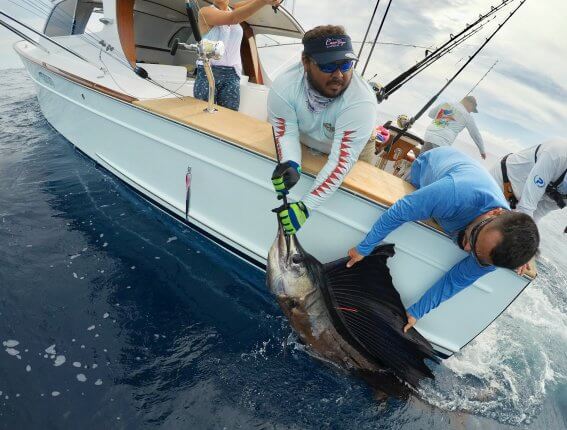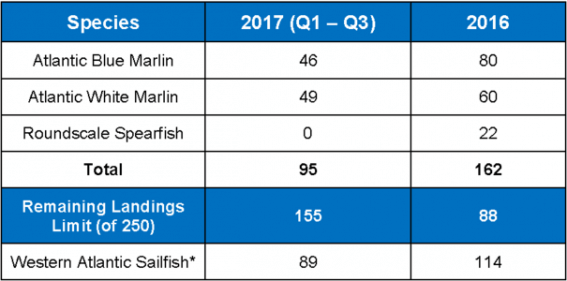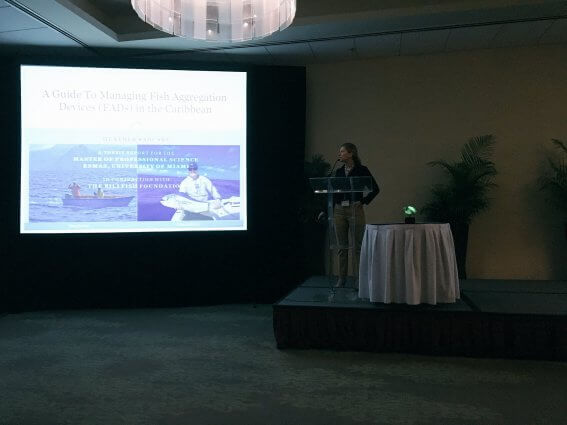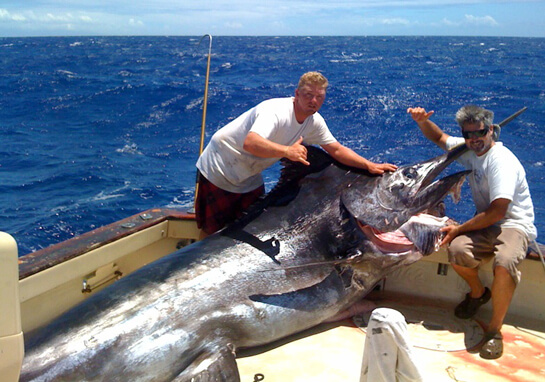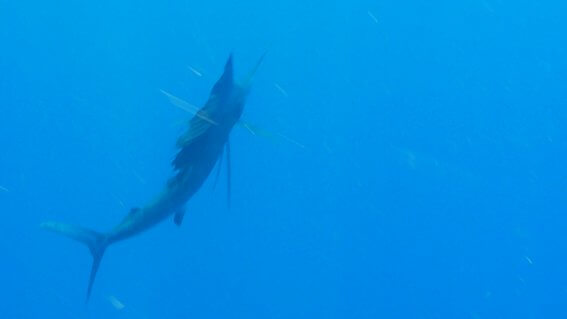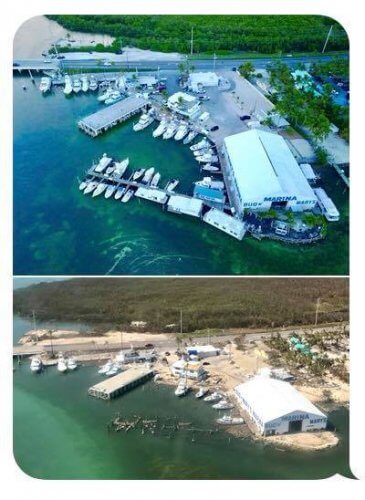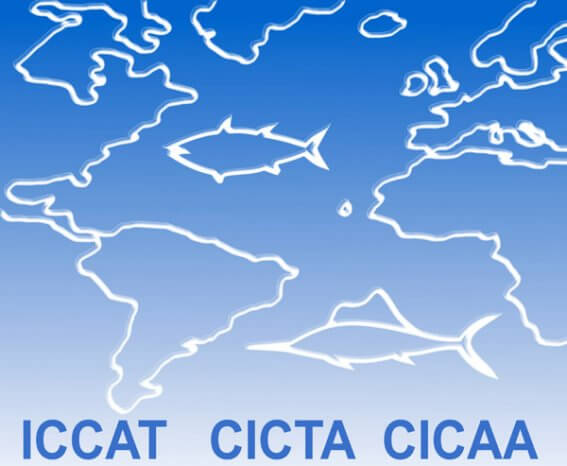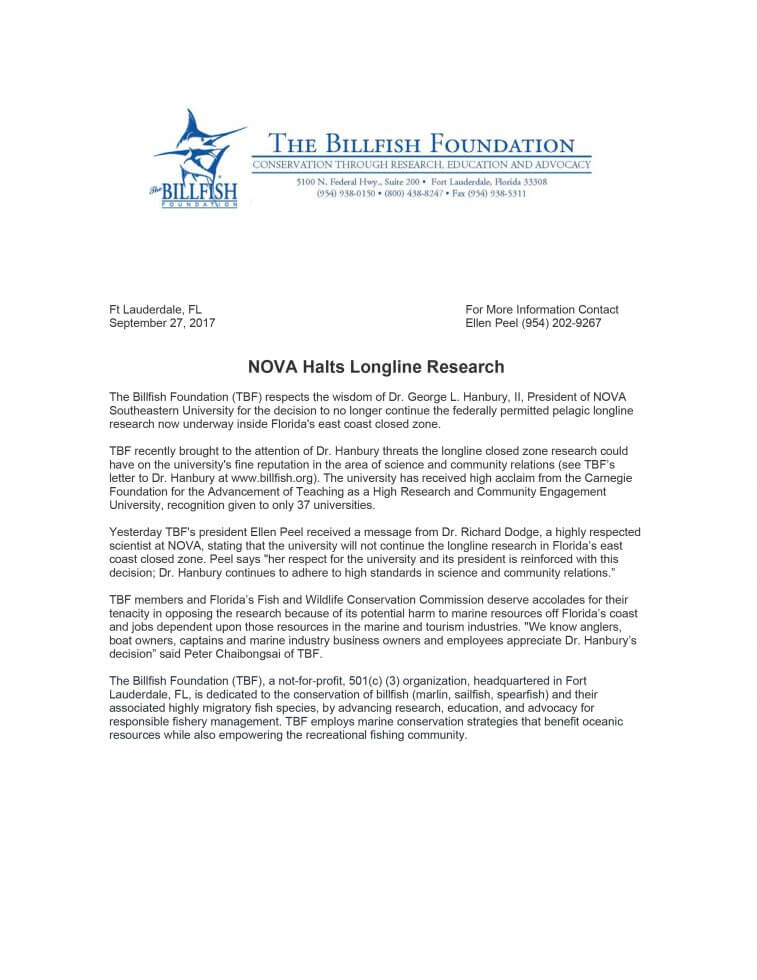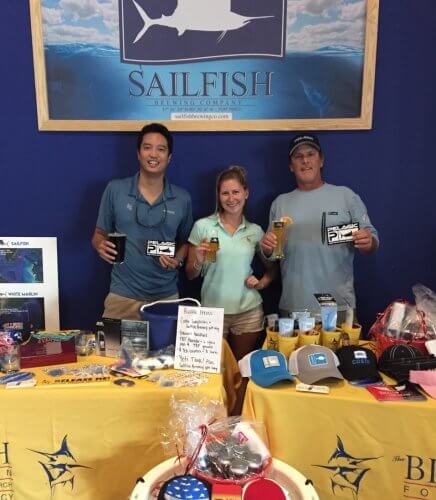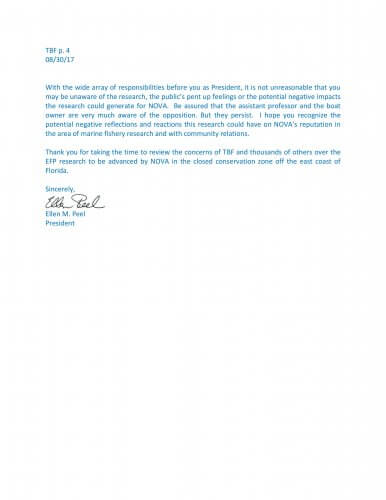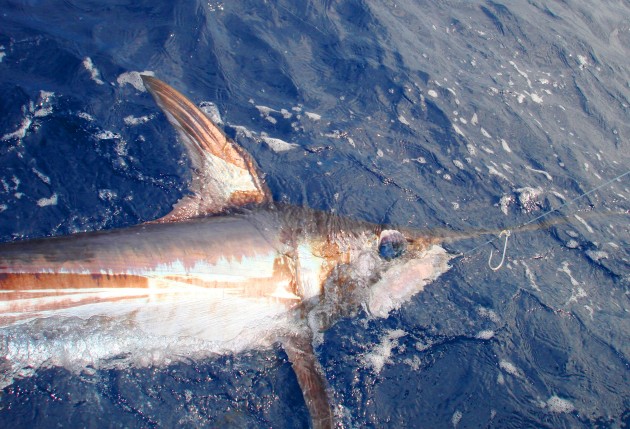
Highly migratory species, including tunas and billfish, travel the world’s oceans and traverse national boundaries. Regional fishery management organizations (RFMOs) work at the international level to manage such species, bringing together scientists and policymakers from all nations who have a stake in the fishery. The International Commission for the Conservation of Atlantic Tuna (ICCAT) is the RFMO that manages tuna, billfish, and sharks in the Atlantic Ocean. Recommendations are made each year based on the best available science and catch limits are set. However, assessing the health of each species requires a substantial amount of data and cannot be accomplished on a yearly basis. That is why stock assessments are highly anticipated in the fisheries community, and why it’s very exciting to announce the release of the 2017 Atlantic swordfish stock assessment.
ICCAT recently published its report on Atlantic swordfish, and came to two different conclusions for the North Atlantic and South Atlantic stocks.
The last assessment for North and South Atlantic swordfish was in 2013. The scientists behind this year’s assessment, including TBF’s chief scientist Dr. Phil Goodyear, utilized two different modeling programs to be sure of their results. They considered environmental factors to understand habitat suitability and therefore swordfish distribution, and used data on catch (amount of biomass) and effort (number of hooks) to assess the health of the stock. The scientists also included variations such as area, year, bait type, and fleet differences in their modeling.
For the North Atlantic swordfish stock, the main fleets targeting the fish as well as providing the data were the U.S., Japan, Canada, Morocco, EU-Spain, and EU-Portugal. ICCAT found this swordfish population to be steady. The rate of recovery has been slower than expected, but by 2015 the stock biomass is above the accepted sustainability threshold of MSY, or maximum sustainable yield (the level at which a stock is capable of yielding maximum product to a fishery while also maintaining a stable population). In fact, catch of North Atlantic swordfish has been below the total allowable catch (TAC) set by the Commission in the past few years. “Both models agreed that overfishing is not occurring and biomass is either higher or very close to BMSY,” (p.11, ICCAT, 2017). This is very positive news considering the dismal shape of swordfish stocks in recent history. It suggests conservation measures, such as closed zones, are working to protect valuable species
The South Atlantic swordfish stock, however, has a different story. Brazil, Uruguay, Japan, Spain, Chinese Taipei, and South Africa provided data for this stock assessment, which showed that the South Atlantic swordfish stock has been declining since 1990 as catches increase. ICCAT determined that the current stock’s biomass is below the threshold of MSY. Since 2010, catch has remained under the expected surplus in accordance with predicted rebuilding of the biomass. “Both models agreed that the southern swordfish stock biomass is overfished, and that overfishing is either occurring or current F [mortality] is very close to FMSY,” (p.11, ICCAT, 2017).
Going forward, ICCAT predicts that the North Atlantic swordfish population will remain at or above Bmsy (biomass will stay at the sustainable level of MSY). The South Atlantic swordfish stock, however, will require a reduced catch to rebuild the population to biomass levels that would create MSY.
After finalizing assessments of Atlantic swordfish stocks, both north and south, ICCAT recommended two specific management measures:
- For the North Atlantic, “It was determined that future catches around or above 12,900 t would likely result in a decrease in biomass,” (p.15). Until this updated assessment, the TAC for North Atlantic swordfish had been set at 13,700 t.
- And for the South Atlantic, “Current level of catches (10,058t) will rebuild the stock to achieve the Convention objectives by 2020…The TAC should not exceed 13,000 t,” (p.15).
TBF remains cautiously optimistic about this report, agreeing with the science that catch should not reach, nor breach, the TAC and should instead remain below to ensure a healthy stock. This assessment comes from the science branch of ICCAT, and it is now up to those of the policy branch to adopt the recommended science-based conservation measures.
The post Recommendations For Atlantic Swordfish Vary By Stock appeared first on The Billfish Foundation.
















